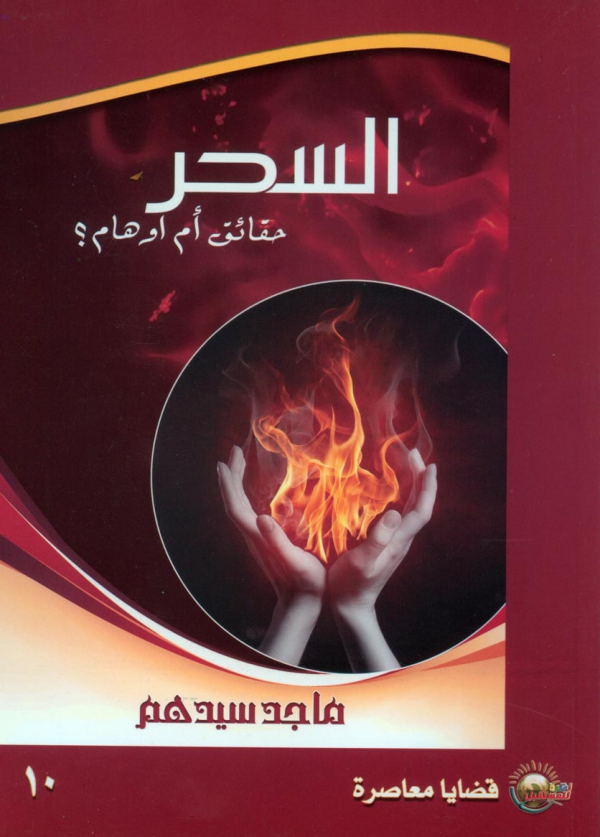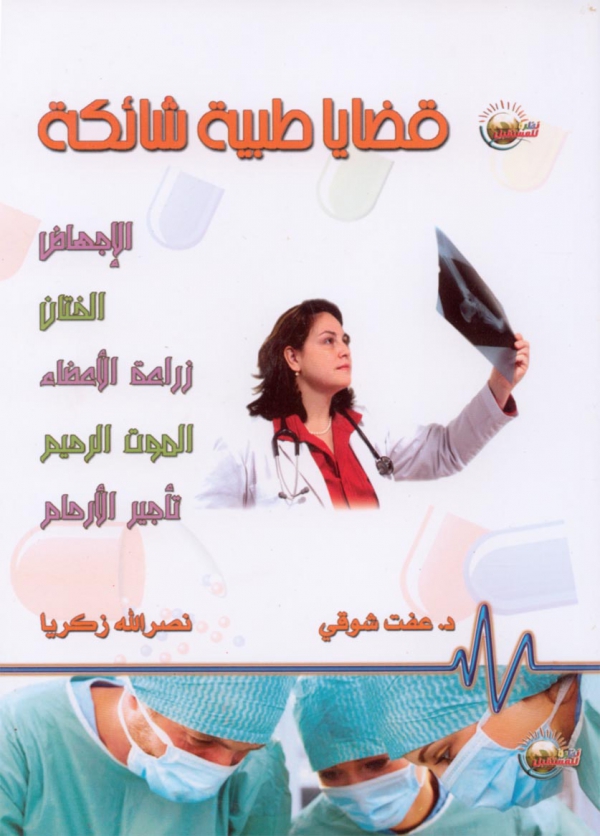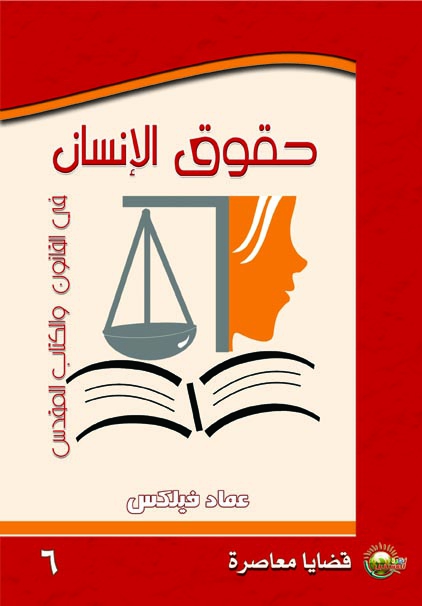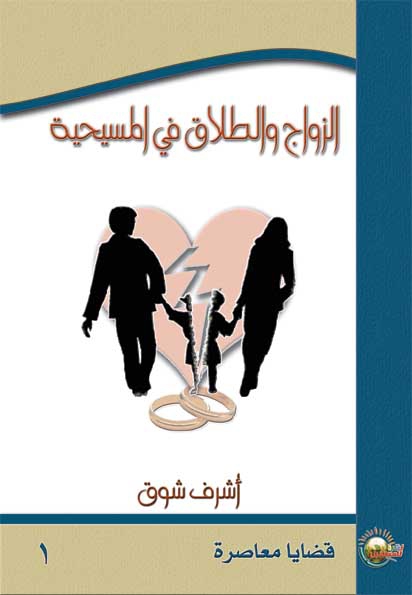Contemporary Issues
The Bible touches on every aspect of our spiritual lives and on our relationships with God. Furthermore, it does not ignore the difficult issues we face in our contemporary lives. It is a book for all times. When we face an issue, we find that the biblical perspective's thinking about it is clarifying. This series deals with contemporary issues (such as divorce, abortion, death and addiction) from a biblical perspective.
An Encyclopedia of Sacred Sex
Author: Dr. Effat Shawki Asaad
Introduction: Dr. Maher El-Dabaa
Publisher: Vision For Future
Marriage is a sacred bond recognized by society. On the basis of the legal legitimacy of this relationship, men and women are able to live together. Marriage is the normal system used in the Bible. It refers to the relationship between God and his people in the Old Testament, and between Christ and the church in the New Testament. The sexual relationship is a measure of the success of the marital relationship. However, some disorders and problems are known to negatively affect the marriage.
"The Encyclopedia of Sacred Sex," published by Vision for the Future, is the seventh book in the contemporary issues series. In this book, Dr. Effat Shawki Asaad addresses the sexual relationship, presenting the Bible's ideal vision of it and revealing it from a scientific perspective, in a simplified orderly account for the laity and non-experts. Presenting the most common problems that occur in the sexual relationship, the author also explains some of their causes, how to prevent them, and even suggests ways of solving these problems. While the book may be a helpful introduction, he affirms the need for some couples to consult a specialist doctor, depending on their particular circumstances.
The goal of the writer in preparing this study is to give couples a kind of roadmap for reaching their best possible sexual relationship together. The book consists of sixteen chapters in almost two hundred pages of medium size.
In the first chapter, entitled "Why did God create sex?" the author presents several reasons why God may have graciously given humanity the satisfaction and pleasure of being fruitful and multiplying.
Chapter Two, entitled "A Biblical Vision of Sexual Relationship between Couples," discusses God's deep vision for the sexual relationship.
In Chapter Three the author tackles "Sexual Differences between Man and Woman," addressing the anatomical and psychological differences between men and women.
In Chapter Four, the author gives great importance to the anatomical structure of the sexual organs for both men and women, under the title "Anatomical Structure of the Reproductive System." The reason he addresses these differences in such detail is because understanding of these differences is important to a couple's ability to properly unite in the sexual relationship.
Chapter Five, entitled, "Basics of the Sexual Relationship," explains that the sexual relationship is based on four basic pillars. The absence of any one of these pillars has a negative impact on the relationship. The sexual relationship is like a table that can only remain balanced when it sits on all four legs. If one of these four legs is missing, the table will not be balanced. The four pillars the author speaks of are sexual desire, arousal, intercourse and satisfaction. In this section of the book, the writer also affirms that God is the Designer of the sexual relationship between a husband and wife. This underlines the importance of both partners treating the other like a real treasure who is different from himself/herself. Whereas men are sexually stimulated by sight, women tend to be aroused by feelings and words. Both must learn to develop and communicate in a common language in order to enrich their relationship, without having such high expectations that their hopes would only result in frustration.
Chapter Six, entitled "The Sexual Relationship," addresses many aspects of the sexual relationship. It deals with wrong ideas that have a harmful impact on the sexual relationship. It presents the levels of intimacy in the sexual relationship. It also offers special tips for both the wife and husband. It touches on how to prepare for the sexual relationship. It concludes with the stages of sexual union.
Dr. Effat gives significant attention to the first night of marriage because of the great importance it has in Eastern Society. Thus,
Chapter Seven addresses "the First Night of Marriage" in detail. In this chapter, the author discusses an important question: Is man's role in sex different from the woman's role?
Chapter Eight is entitled "The Role of Sex," and it highlights that sex satisfies a woman's femininity, reassuring her of her husband's love, and giving her a sense of security, whereas sex for a man satisfies his instinct and manhood, increases his love for his wife, reduces disputes, and increases his pleasure.
In Chapters Nine and Ten, the author addresses two important aspects about the sexual relationship, namely: sex during pregnancy and after childbirth; and the effect of aging on sexuality. In every case, unknowns within the sexual relationship have a definite negative affect on the sexual relationship. This means that the husband and wife must both be aware that every stage has its own features and nature. When couples realize this, they will be better prepared to go through these phases without unnecessary disappointment or discomfort.
Are sexual relationships affected by problems? Like all relationships, the sexual relationship suffers from many problems, especially during intercourse. Couples need to know about these potential problems in order to be ready to face them. Everything that prevents couples from reaching their sexual climax or eroticism together should be avoided. The author explains these problems in Chapter Eleven, entitled "Sexual Problems."
The author goes on to deal with communication as the most key to success in sexual intimacy in Chapter Twelve.
When couples face problems in their sexual relationship or feel pain in their bodies, they are advised to go to a physician quickly. Therefore, knowing whether there is a need to go to a physician, specialist, or sexual counselor is the question addressed by Chapter
Thirteen, entitled "Counseling and Sex."
Chapter Fourteen addresses commonly asked questions about sex such as: Why is adultery a deviation? What is its impact on marriage? Why do young people resort to masturbation? What are the harms of masturbation? How can young people avoid it? What are the stages of addiction in watching pornography?
Chapter Fifteen presents some of the factors which may lead to infertility, which are unknown to many people. The writer gives special attention in this chapter to the ways to systematically increase fertility.
The book's concluding chapter addresses a range of sexual deviations. In this list of deviations the writer includes homosexuality, sexual fetishism, masochism, voyeurism, incest, sex with animals and sex with the dead.
The author concludes that not all desires are to be rejected outright. There is no specific or singular way, and each partner's desire for sex may differ. This means that only experience, openness, and a sense of security with the other partner, will allow the two to help each other identify what he/she wants and share it with his/her partner. Only working together will they be able to reach satisfaction and pleasure.













